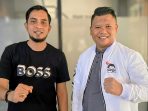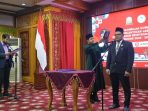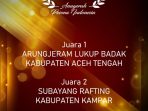oleh : Dr. Joni MN, M.Pd.B.I*
Continuation of the part one…
All language learning occurs through experience, except for analogical creations which may combine previous experience into new sequences. This is confirmed by the fact that students learn the language that is spoken around them. Gayonese culture, being a more specifically compartmentalized social entity than that of much larger communities, shows patterns of behaviors that reflect it specific social categories. Since age groups in Gayonese society are highly differentiated, one expects and finds different patterns of behavior for each.
It is expected by this research there will be the preservation and encouragement of the students and lecturers that the behavior and customs of Gayonese culture can be conducted in the classrooms of English department. And by using 2 (two) languages in the same time together can give a positive value for the Gayonese culture and for educational experience.
This paper (research) focuses on the study of English Education program. Currently that study program has more than 500 students in the second, fourth, sixth, and eighth semesters at the a university in Takengon that students come from the area around Central Aceh, Bener Meriah, North Aceh, South-East Aceh, Belang Kejeren and North Sumatra.
Many of them come from Central Aceh and Bener Meriah that belong to the development program of Central Aceh and have language and culture which are the same as Central Aceh or Takengon.
The Students of the speaking skill in English study program of a university in Takengon do not comprehend the language and the culture in detail, especially the connection of language and culture and the role of culture in communication using language. The writer thinks that language and culture are tied closely and depend on each other like the flesh of a fruit and its peel.
McKay (2003) contends that culture influences language teaching in two ways: linguistically and pedagogically. Linguistically, culture affects the semantic, pragmatic, and discourse levels of the language. Pedagogically, culture influences the choice of the language materials because cultural content of the language materials and the cultural basis of the teaching methodology are to be taken into consideration while deciding upon the language materials.
For example, while some textbooks provide examples from the target culture, some others use source culture materials. Language without culture can be described as language which does not create a clear social context between listener and speaker. Furthermore, culture without language can not transfer its values that come from the customs or regional traditions. To maintain the cultural borders, or the rules in doing an activity and in communicating in daily life, language is a must.
In the learning and teaching of English in a university of Takengon, it seems that the correlation between Culture and Language has not been seen significantly using Gayo Culture in learning English. This can be seen from reports from the lecturers of conversation. The students find many difficulties in communicating to older people such as to the lecturers. They are also weak in mastering vocabulary for use in real life. They will study English without a native speaker.
From the background above, there is a challenge for the lecturers of a university of Takengon . To develop a good methodology so that the students of the English study at a university will study English speaking well by utilizing the local culture. In other words, they will defend, maintain and state the opinion about their culture and its values which are unique while speaking English.
Continued…




















